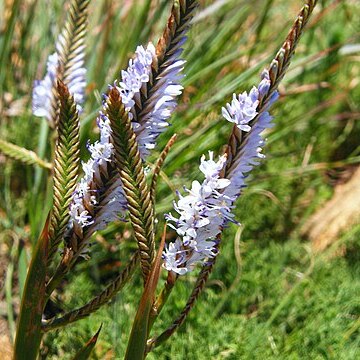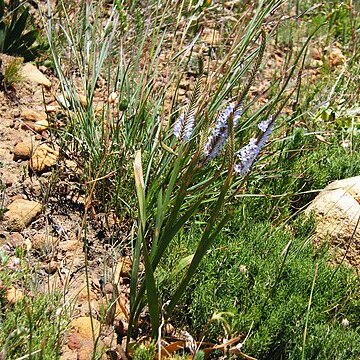Perennial herb, geophyte, 0.18-0.40 m high; corm globose, tunics densely fibrous, reticulate; stem usually simple. Leaves ensiform, acute, ribbed, with distinct midvein, 5-12 mm wide. Bracts brown with broad membranous margins, dry, rigid, imbricate. Inflorescence a dense, distichous spike; flowers usually pale to deep blue; perianth tube as long as tepals; tepals unequal; style branches reaching to top of filaments. Stamens unilateral and arcuate. Ovary with filiform style. Flowering time Dec., Jan.
Cormous geophyte, 25-40 cm. Leaves sword-shaped or falcate, plane with distinct midvein. Flowers many in 2-ranked spikes, pale to deep blue.


